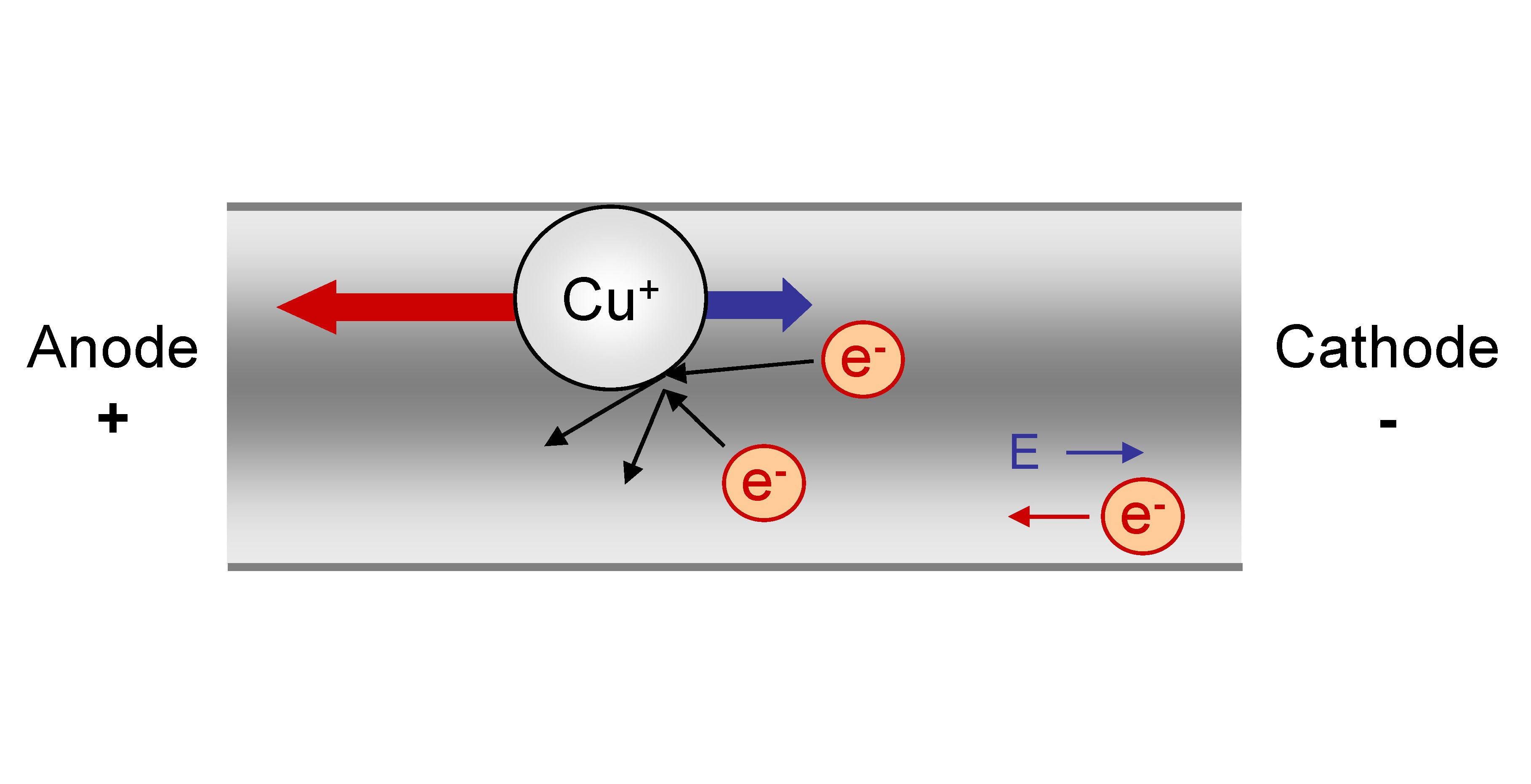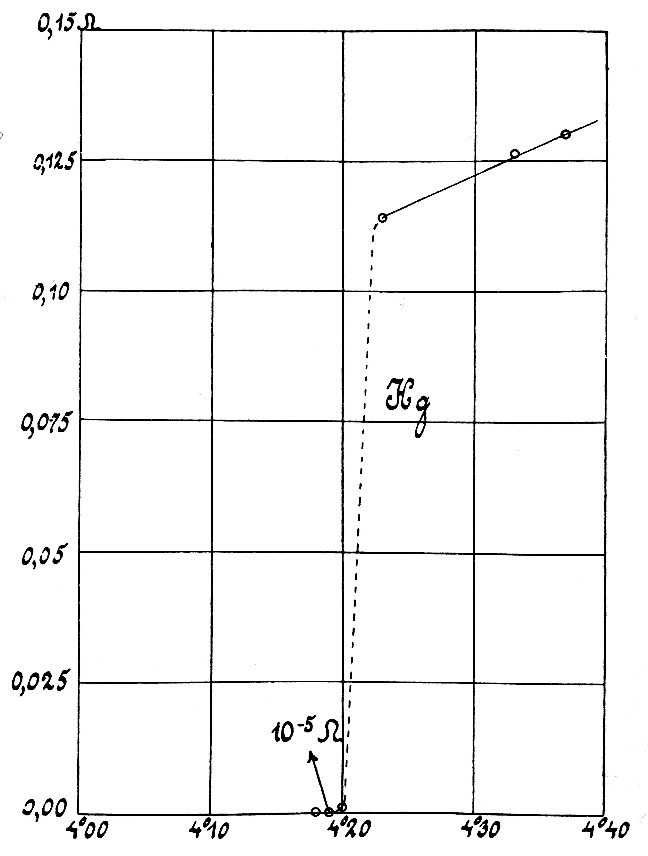|
Copper Interconnects
Copper interconnects are used in integrated circuits to reduce propagation delays and power consumption. Since copper is a better conductor than aluminium, ICs using copper for their Interconnect (integrated circuit), interconnects can have interconnects with narrower dimensions, and use less energy to pass electricity through them. Together, these effects lead to ICs with better performance. They were first introduced by IBM, with assistance from Motorola, in 1997. The transition from aluminium to copper required significant developments in fabrication (semiconductor), fabrication techniques, including radically different methods for patterning the metal as well as the introduction of barrier metal layers to isolate the silicon from potentially damaging copper atoms. Although the methods of superconformal copper electrodepostion were known since late 1960, their application at the (sub)micron via scale (e.g. in microchips) started only in 1988-1995 (see figure). By year 2002 it ... [...More Info...] [...Related Items...] OR: [Wikipedia] [Google] [Baidu] |
Integrated Circuit
An integrated circuit (IC), also known as a microchip or simply chip, is a set of electronic circuits, consisting of various electronic components (such as transistors, resistors, and capacitors) and their interconnections. These components are etched onto a small, flat piece ("chip") of semiconductor material, usually silicon. Integrated circuits are used in a wide range of electronic devices, including computers, smartphones, and televisions, to perform various functions such as processing and storing information. They have greatly impacted the field of electronics by enabling device miniaturization and enhanced functionality. Integrated circuits are orders of magnitude smaller, faster, and less expensive than those constructed of discrete components, allowing a large transistor count. The IC's mass production capability, reliability, and building-block approach to integrated circuit design have ensured the rapid adoption of standardized ICs in place of designs using discre ... [...More Info...] [...Related Items...] OR: [Wikipedia] [Google] [Baidu] |
Deep-level Trap
Deep-level traps or deep-level defects are a generally undesirable type of electronic defect in semiconductors. They are "deep" in the sense that the energy required to remove an electron or hole from the trap to the valence or conduction band is much larger than the characteristic thermal energy ''kT'', where ''k'' is the Boltzmann constant and ''T'' is the temperature. Deep traps interfere with more useful types of doping by ''compensating'' the dominant charge carrier type, annihilating either free electrons or electron holes depending on which is more prevalent. They also directly interfere with the operation of transistors, light-emitting diodes and other electronic and opto-electronic devices, by offering an intermediate state inside the band gap. Deep-level traps shorten the non-radiative life time of charge carriers, and—through the Shockley–Read–Hall (SRH) process—facilitate recombination of minority carriers, having adverse effects on the semiconductor device ... [...More Info...] [...Related Items...] OR: [Wikipedia] [Google] [Baidu] |
Carbon Nanotubes In Interconnects
In nanotechnology, carbon nanotube interconnects refer to the proposed use of carbon nanotubes in the interconnects between the elements of an integrated circuit. Carbon nanotubes (CNTs) can be thought of as single atomic layer graphite sheets rolled up to form seamless cylinders. Depending on the direction on which they are rolled, CNTs can be semiconducting or metallic. Metallic carbon nanotubes have been identified as a possible interconnect material for the future technology generations and to replace copper interconnects. Electron transport can go over long nanotube lengths, 1 μm, enabling CNTs to carry very high currents (i.e. up to a current density of 109 A∙ cm−2) with essentially no heating due to nearly one dimensional electronic structure. Despite the current saturation in CNTs at high fields, the mitigation of such effects is possible due to encapsulated nanowires. Carbon nanotubes for interconnects application in Integrated chips have been studied since 2001, ... [...More Info...] [...Related Items...] OR: [Wikipedia] [Google] [Baidu] |
Polyethyleneglycol
Polyethylene glycol (PEG; ) is a polyether compound derived from petroleum with many applications, from industrial manufacturing to medicine. PEG is also known as polyethylene oxide (PEO) or polyoxyethylene (POE), depending on its molecular weight. The structure of PEG is commonly expressed as H−(O−CH2−CH2)n−OH. PEG is commonly incorporated into hydrogels which present a functional form for further use. Uses Medical uses * Pharmaceutical-grade PEG is used as an excipient in many pharmaceutical products, in oral, topical, and parenteral dosage forms. * PEG is the basis of a number of laxatives (as ''MiraLax, RestoraLAX, MoviPrep, etc.''). Whole bowel irrigation with polyethylene glycol and added electrolytes is used for bowel preparation before surgery or colonoscopy or for children with constipation. Macrogol (with brand names such as Laxido, Movicol and Miralax) is the generic name for polyethylene glycol used as a laxative. The name may be followed by a number ... [...More Info...] [...Related Items...] OR: [Wikipedia] [Google] [Baidu] |
Low-κ Dielectric
In semiconductor manufacturing, a low-κ is a material with a small relative dielectric constant (κ, kappa) relative to silicon dioxide. Low-κ dielectric material implementation is one of several strategies used to allow continued scaling of microelectronic devices, colloquially referred to as extending Moore's law. In digital circuits, insulating dielectrics separate the conducting parts (wire interconnects and transistors) from one another. As components have scaled and transistors have gotten closer together, the insulating dielectrics have thinned to the point where charge build up and crosstalk adversely affect the performance of the device. Replacing the silicon dioxide with a low-κ dielectric of the same thickness reduces parasitic capacitance, enabling faster switching speeds (in case of synchronous circuits) and lower heat dissipation. In conversation such materials may be referred to as "low-k" (spoken "low-kay") rather than "low-κ" (low-kappa). Low-κ materials ... [...More Info...] [...Related Items...] OR: [Wikipedia] [Google] [Baidu] |
Copper
Copper is a chemical element; it has symbol Cu (from Latin ) and atomic number 29. It is a soft, malleable, and ductile metal with very high thermal and electrical conductivity. A freshly exposed surface of pure copper has a pinkish-orange color. Copper is used as a conductor of heat and electricity, as a building material, and as a constituent of various metal alloys, such as sterling silver used in jewelry, cupronickel used to make marine hardware and coins, and constantan used in strain gauges and thermocouples for temperature measurement. Copper is one of the few metals that can occur in nature in a directly usable, unalloyed metallic form. This means that copper is a native metal. This led to very early human use in several regions, from . Thousands of years later, it was the first metal to be smelted from sulfide ores, ; the first metal to be cast into a shape in a mold, ; and the first metal to be purposely alloyed with another metal, tin, to create bronze, ... [...More Info...] [...Related Items...] OR: [Wikipedia] [Google] [Baidu] |
Kishore
Kishore () may refer to: * Kishore (name), an Indian given name and surname * '' Captain Kishore'', a 1940 Bollywood film * '' K for Kishore'', a 2007–2008 Indian television singing contest * '' Kishore Bangla'', Bengali-language juvenile weekly newspaper * Amdanga Jugal Kishore Mahavidyalaya, a college in West Bengal, India * Gour Kishore Ghosh metro station of the Kolkata Metro * Dum Dum Kishore Bharati High School in Kolkata, India * Kishore Bharati Krirangan, a multipurpose stadium in Kolkata, India * Kishore Bharati Bhagini Nivedita (Co-ed) College in Behala, West Bengal, India * Kishore Kala Mandir Kishore Kala Mandir is a private building situated in Beohari city of Shahdol division in Madhya Pradesh Madhya Pradesh (; ; ) is a state in central India. Its capital is Bhopal and the largest city is Indore, Indore. Other major cities in ..., a private building in Beohari city, India * Kishore Vaigyanik Protsahan Yojana (English: Young Scientist Incentive Pla ... [...More Info...] [...Related Items...] OR: [Wikipedia] [Google] [Baidu] |
Electromigration
Electromigration is the transport of material caused by the gradual movement of the ions in a Conductor (material), conductor due to the momentum transfer between conducting electrons and diffusing metal atoms. The effect is important in applications where high direct current densities are used, such as in microelectronics and related structures. As the structure size in electronics such as integrated circuits (ICs) decreases, the practical significance of this effect increases. History The phenomenon of electromigration has been known for over 100 years, having been discovered by the French scientist Gerardin. The topic first became of practical interest during the late 1960s when packaged ICs first appeared. The earliest commercially available ICs failed in a mere three weeks of use from runaway electromigration, which led to a major industry effort to correct this problem. The first observation of electromigration in thin films was made by I. Blech.I. Blech: ''Electromigratio ... [...More Info...] [...Related Items...] OR: [Wikipedia] [Google] [Baidu] |
Titanium Nitride
Titanium nitride (TiN; sometimes known as tinite) is an extremely hard ceramic material, often used as a physical vapor deposition (PVD) coating on titanium alloys, steel, carbide, and aluminium components to improve the substrate's surface properties. Applied as a thin coating, TiN is used to harden and protect cutting and sliding surfaces, for decorative purposes (for its golden appearance), and as a non-toxic exterior for medical implants. In most applications a coating of less than is applied. Characteristics TiN has a Vickers hardness of 1800–2100, hardness of , a modulus of elasticity of , a thermal expansion coefficient of 9.35 K−1, and a superconducting transition temperature of 5.6 K. TiN oxidizes at 800 °C in a normal atmosphere. It is chemically stable at 20 °C, according to laboratory tests, but can be slowly attacked by concentrated acid solutions with rising temperatures. TiN has a brown color and appears gold when applied as a coati ... [...More Info...] [...Related Items...] OR: [Wikipedia] [Google] [Baidu] |
Electrical Conductivity
Electrical resistivity (also called volume resistivity or specific electrical resistance) is a fundamental specific property of a material that measures its electrical resistance or how strongly it resists electric current. A low resistivity indicates a material that readily allows electric current. Resistivity is commonly represented by the Greek alphabet, Greek letter (Rho (letter), rho). The SI unit of electrical resistivity is the ohm-metre (Ω⋅m). For example, if a solid cube of material has sheet contacts on two opposite faces, and the Electrical resistance, resistance between these contacts is , then the resistivity of the material is . Electrical conductivity (or specific conductance) is the reciprocal of electrical resistivity. It represents a material's ability to conduct electric current. It is commonly signified by the Greek letter (Sigma (letter), sigma), but (kappa) (especially in electrical engineering) and (gamma) are sometimes used. ... [...More Info...] [...Related Items...] OR: [Wikipedia] [Google] [Baidu] |




